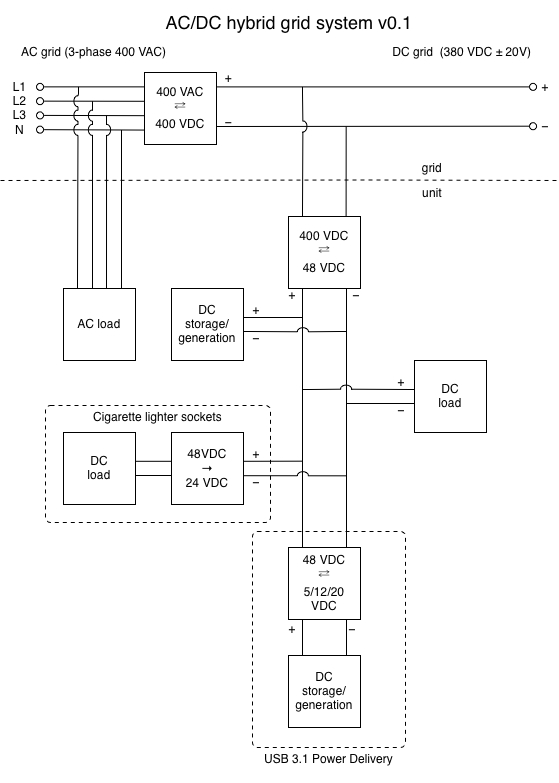Decentralized DC grid
The idea is to have an all-DC grid, where power sources, storage systems and loads are decentrally connected. Voltage conversion in the DC-DC domain now is at least as efficient as for AC and most loads use DC anyways, whereas conversion from DC to AC and vice versa has (overall system) losses of 10-20%.
The system might use a Single Wire Earth Return (SWER) to save copper and might use a Bidirectional DC-DC converter to convert from the local storage and generating capacity’s low-voltage DC (12-48V) to the grid’s higher voltage (200-400V). This would make it possible to hybridize, differentiate and spread storage and generating capacity, lowering the required budget for full energy sustainability and, possibly allowing for competitiveness with an AC-based ‘legacy’ based all-renewable grid.
One clear advantage of DC here would be that it is, essentially, plug and play: the energy flow does not need to be ‘calibrated’ (i.e. tuned power factors as in AC grids), it requires only a minimal amount of centralized design. Essentially, the bi-directional converters that form the contact point between autonomous units of production and/or storage and the ‘grid’ will, collectively stabilize voltage and current flows.
Redundancy can be easily achieved by adhering to a mesh topology, assuring that autonomous units have as many connections as possible.
Presentation slides
Presentation of DC grid features, advantages and challenges. https://tinyurl.com/dc-grids
Design sketch

Internal resources
- Single Wire Earth Return (SWER)
- Bidirectional DC-DC converter
- Research plan: energy
- Research plan: grid
- EPC
- Hardware components
External resources
- DC Components and Grids at Technical University of Eindhoven
- Vicor Webinars: 380V HVDC Power Distribution in Datacenters, Commercial Buildings and Offices
- Presentation: 380V DC in Commercial Buildings and Offices
- Open Ecology’s Universal Power Supply